Deda has been making handlebars since 1999, including my personal favourite bar shape of all time, the Italian shallow or classic bar, in 40 or 42cm (still the best shape when in the drops, in my opinion). The Gera carbon is nothing like the bar I lusted after in my twenties; in fact, it’s not like any other bar I’ve used, but is that a good thing?
I fitted a set to my trusty gravel test bike and spent the winter largely on the Peak District’s finest trails to see if the radically different position offered by the Gera is a blessing or a curse compared to some of the best ‘regular’ shaped gravel handlebars.
The construction
The first and most obvious thing about the Gera is its shape; it’s quite unlike anything I’ve ever used on gravel or road.
I’ll start in the centre, which is a standard 31.7mm (or 31.8 for most other brands) diameter, and has an 80mm wide section that is strong enough to fit tri bars for long-distance gravel adventures. From the centre, the bar moves forward by 30mm and then sweeps backwards at a 12-degree angle, combined with a 7mm rise. This may seem unusual to some, but those accustomed to mountain bikes will feel at home with the back-swept design.
Those accustomed to mountain bikes will feel at home with the back-swept design.
(Image credit: Future)
While the sweep has been used by other brands, the lever position, is not something I’ve encountered before. They have barely any reach at all; only 40mm in fact from the centre of the bar and it feels shorter than that. In practice, the back sweep of the top section puts the lever hood in line with the front section of the handlebar. For comparison, bars typically have a reach of around 70-90mm, providing a noticeable transition from the tops to the lever hoods. The drops are a more standard 100mm, with ample length on the lower sections.
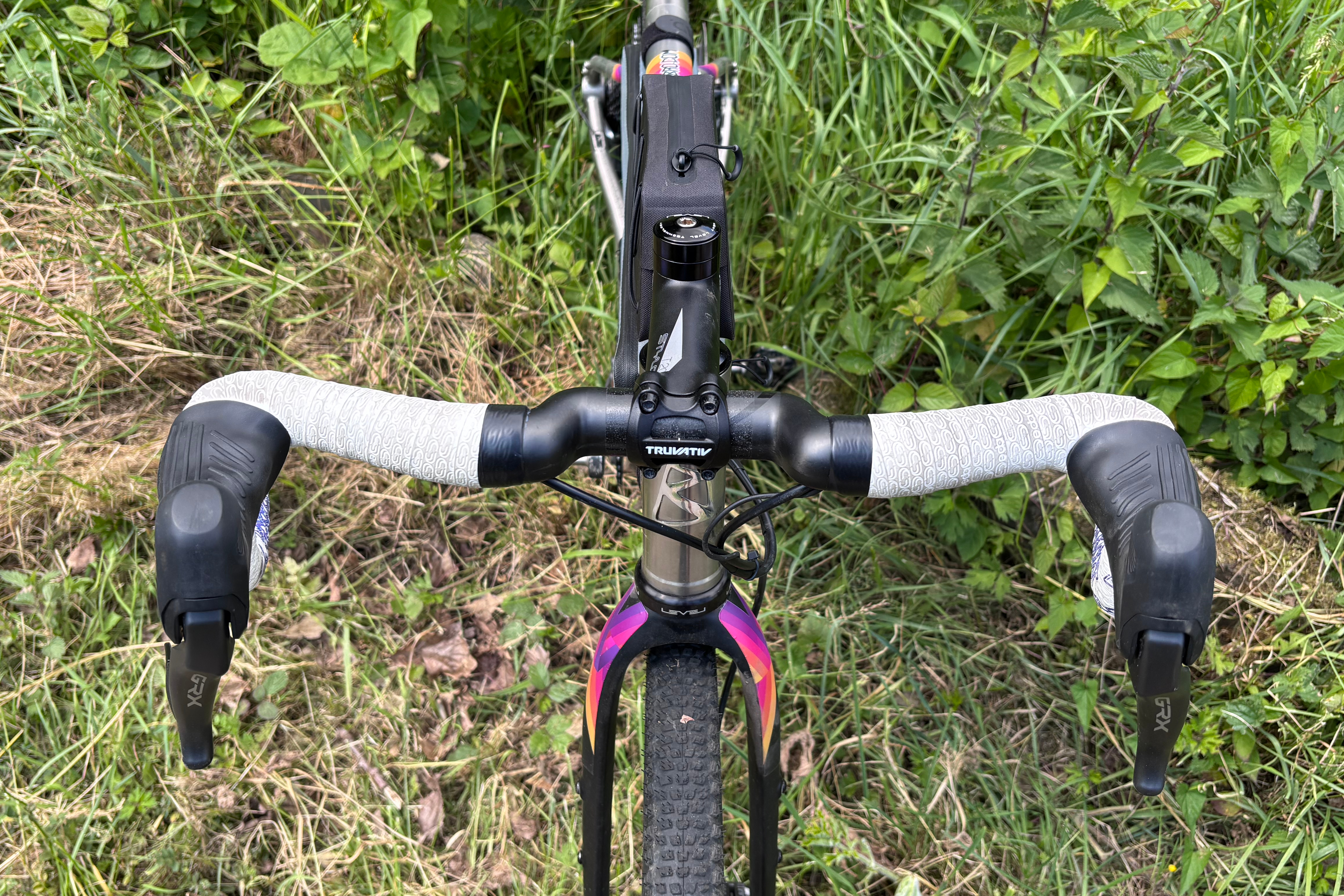
(Image credit: Future)
These then flow to the slightly elongated and flared drop section, which flares at an angle of 16 degrees. This is ok for gravel, not too extreme, but more than you would find on an all-road style bike, for example. They come in 420, 440, and 460mm widths at the hoods, which flare out to 520, 540, and 560mm, respectively. It’s worth bearing in mind, though, that Deda measures from the outside of the bar, not centre to centre like most brands, so they measure up narrower than most competitors’ offerings.
They appear very well-made, with a quality feel to the matte UD carbon finish. They also feature Deda’s DCR system, which means they will work with complete internally routed cable setups or, like me, you can run them semi-internally with the brake hose running through the tops and exiting next to the stem. They are also pretty light at 230g, which shouldn’t be that big a surprise considering their high price tag.
The ride
Fitting the bars was relatively straightforward, and fortunately, my gravel bike has semi-internal routing, so I didn’t have to deal with any headset cable routing nightmares. That said, the entry and exit holes for the cables are adequate, and easy to feed hoses and cables through with an internal cable tool such as the Park IR 1.3.
However, deciding where the lever should sit wasn’t as straightforward. The lack of reach means the hose exits from the lever hood (a Shimano GRX Di2 in this instance) at a very sharp angle and can be awkward to set up correctly. In fact, I did my first few rides without bar tape fitted, as I needed to fiddle with the position to get the hoods somewhere I liked. With Di2 and hydraulic hoses, the sharp angle wasn’t too big a deal, but if you’re running cable gears or brakes, this could lead to friction issues, as there’s simply not enough room for a smooth cable curve.
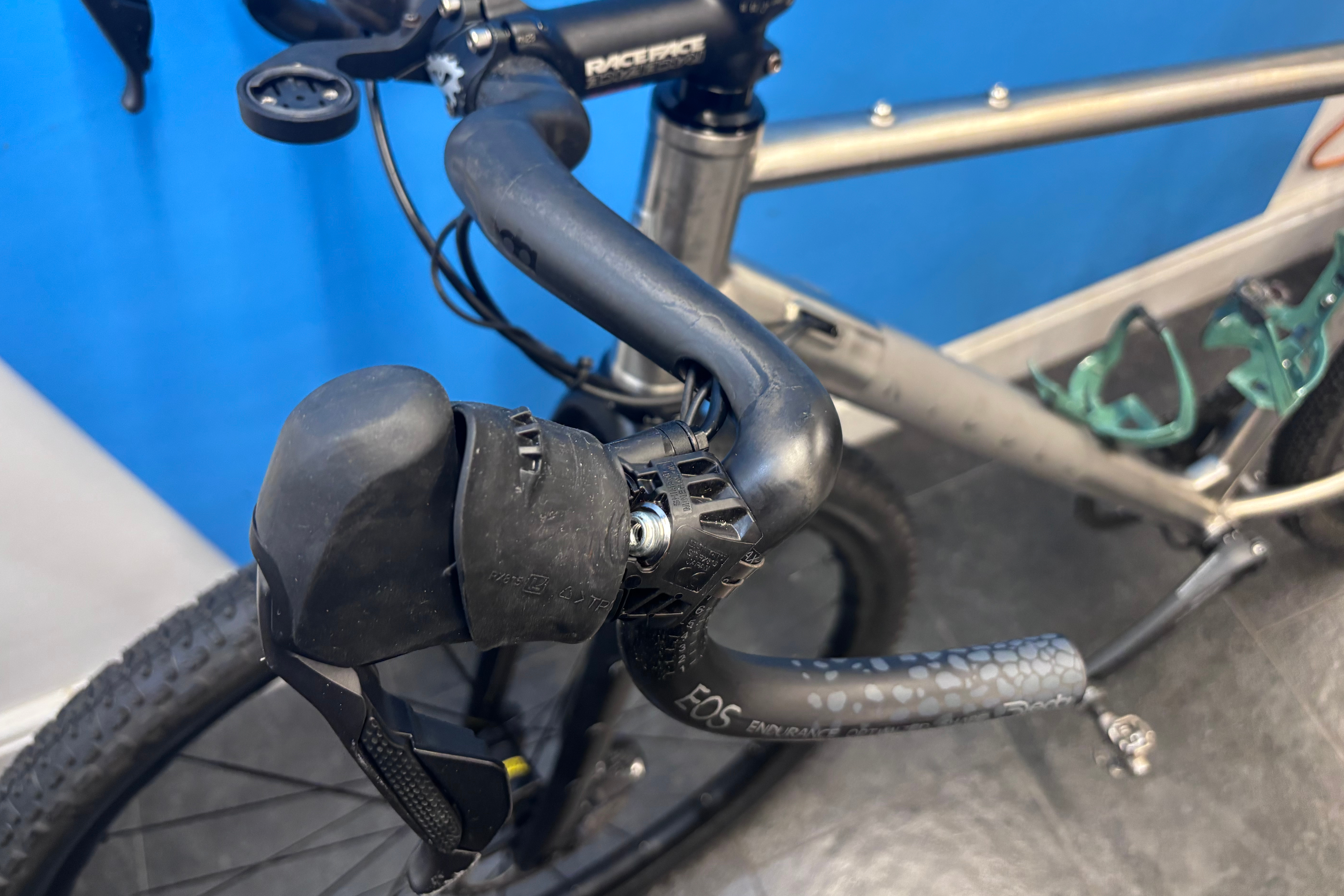
(Image credit: Future)
The Gera is designed as an adventure gravel bar; Deda offers a more standard-looking bar called the Gravel100 with a similar sweep in the drops but a much more traditional reach and look.
I’m not sure what makes an adventure handlebar, but it took me some time to get used to it. I found the back-swept top section comfortable, with its slightly oversized oval shape feeling very nice in the hand, but I struggled with the lack of reach to the lever hoods. Thats probably a lot to do with the fact that every bar Ive ever used has a pronounced transition from the tops to the hoods, and it certainly took sometime to rewire my brain to the new setup, especially in technical sections where I needed to move from the tops or drops to the lever hoods quickly.
After a few rides, I decided to fit a longer stem and increase my stack height by 20mm. With an 80mm stem fitted, the short reach put my weight too far forward, making me feel I was going to go over the bars anytime the trail pointed downwards. With a taller front end and a 100mm stem fitted, this was less of an issue, although it made the forward-extended top section feel odd to begin with, as it extended the reach when I was using the centre of the bars.
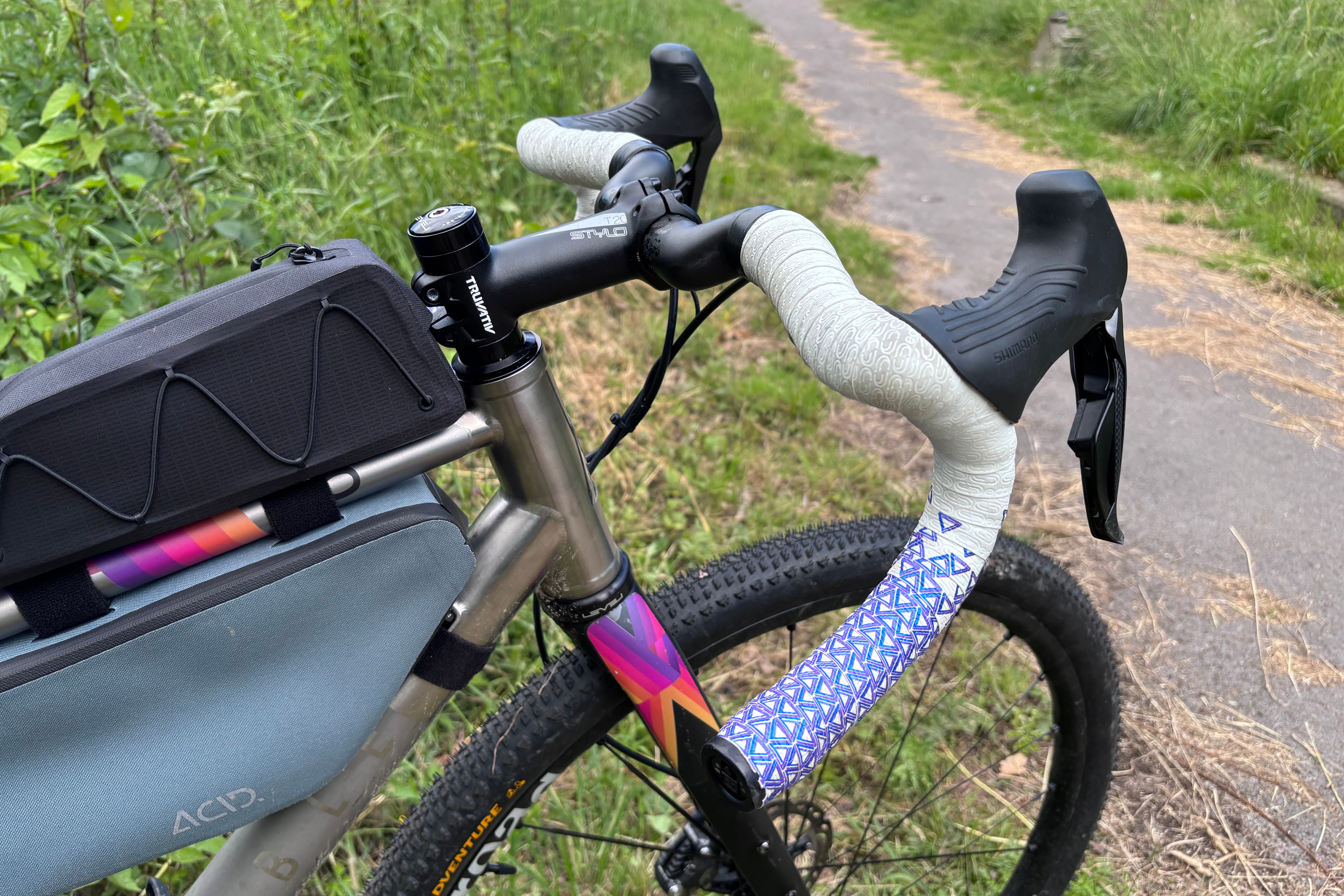
(Image credit: Future)
The carbon construction on the Gera was quite stiff, somewhat at odds with its adventure intentions. I didn’t see this as a big problem personally, as I prefer a stiff handlebar and opt for a softer handlebar tape. I prefer flex in other areas, like the frame and wheels. However, bear this in mind if you are looking for something to reduce some of the high-frequency buzz you get off-road. I ran the rather good Deda Loop tape, which isn’t the thickest but does have a very nice grippy feel and just enough squish for me. I did find that taping the bars took a little longer than usual but it was made easier by using a tape with plenty of stretch to cover the sharp angle of the top-to-hood transition more easily.
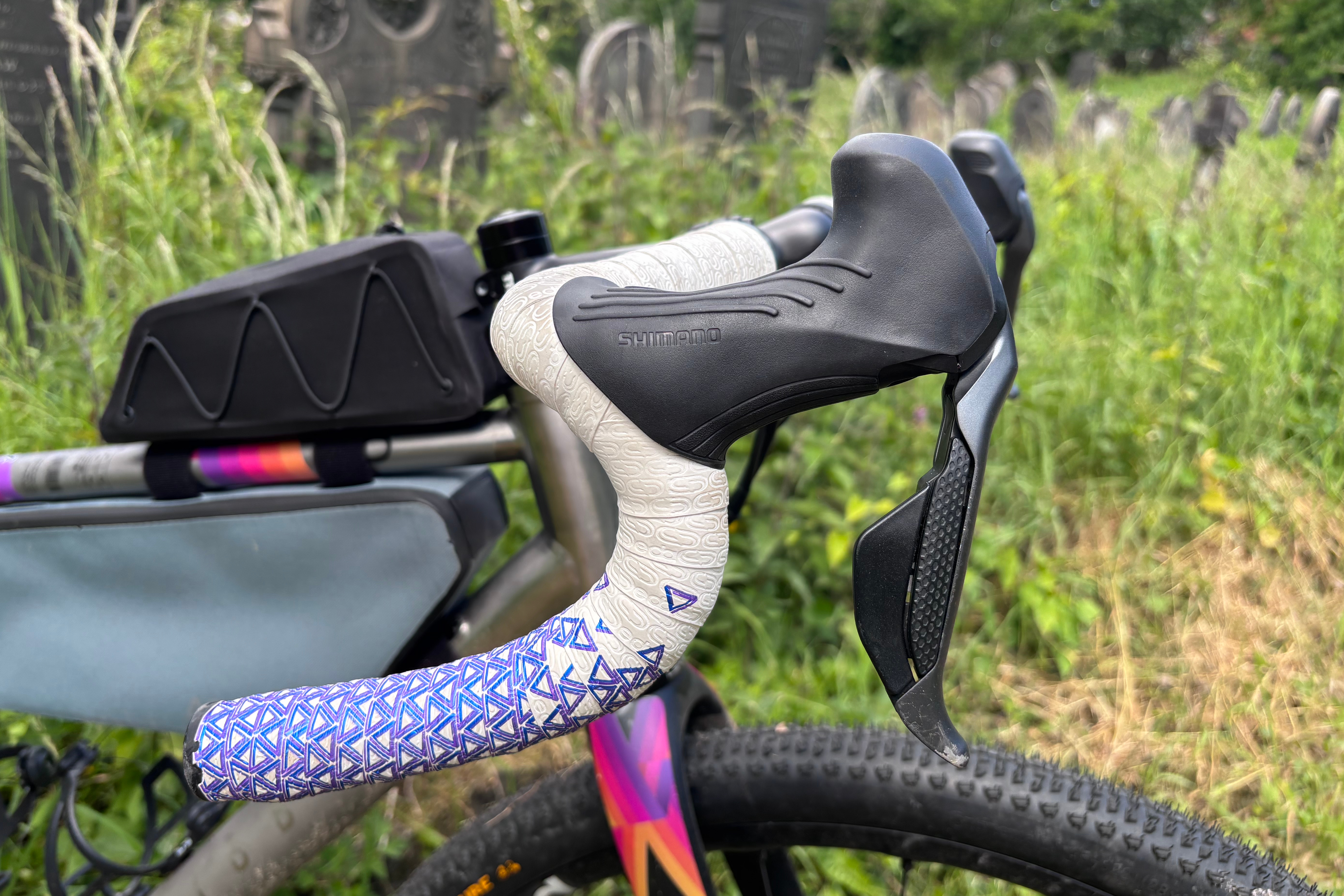
(Image credit: Future)
I don’t often run a bar bag, but as these are designed for adventure use, I rode with some bags from Cube’s acid range. These use a fairly standard adjustable strap method of securing the bag to the bars, but I couldn’t get a good fit on the Gera despite trying several options. This was due to the forward section that protrudes from the stem area, so you can’t really grip the tops at all with a bag fitted, as you have to mount the bag on the start of the swept area, which I found to be annoying on longer rides.
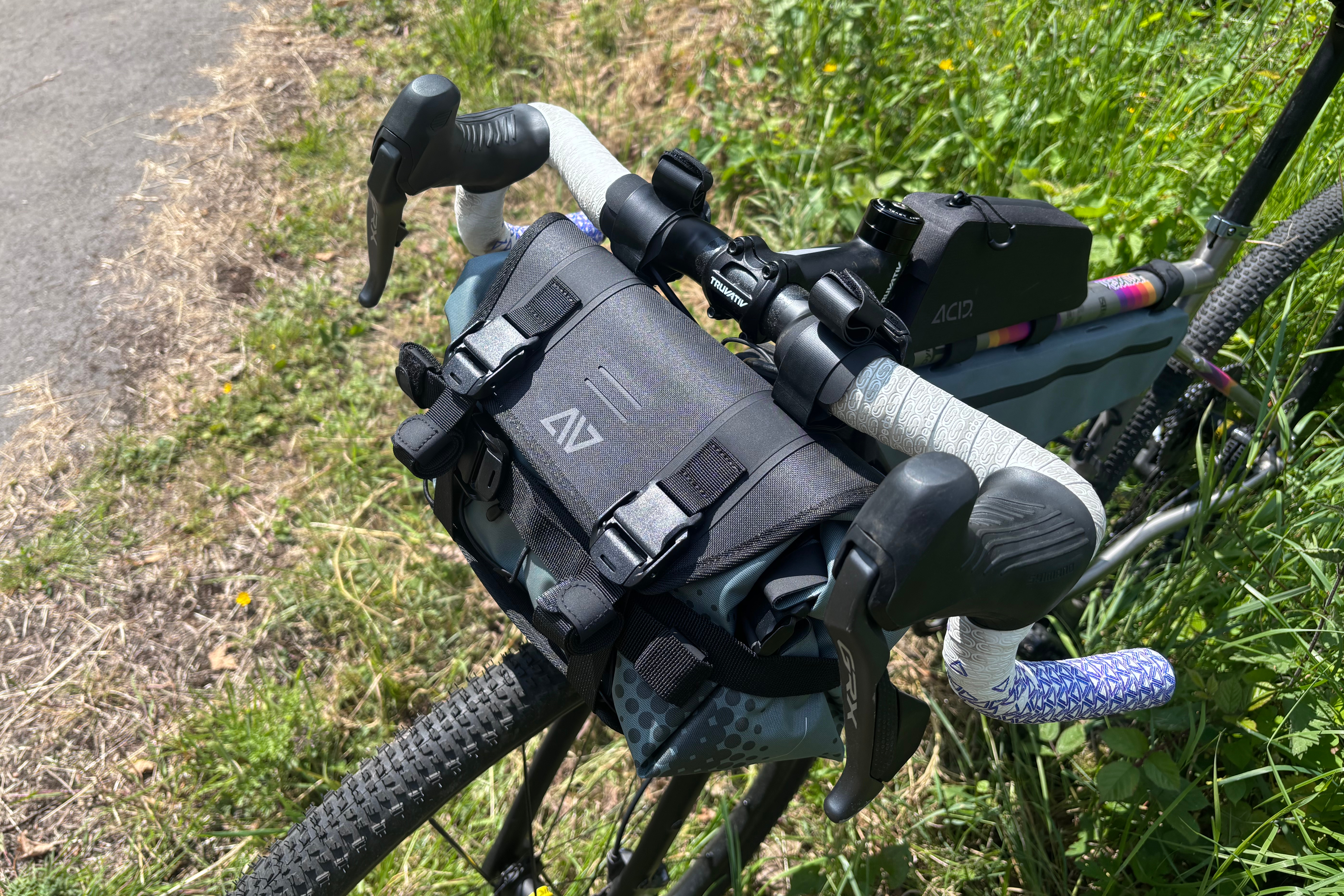
(Image credit: Future)
The 16-degree flare on the drops was fine, and did give more control in technical sections. However moving from here to the hoods wasn’t as easy as I’d like. In fact, I had several instances of misplacing my hands when moving from the drops to the hoods.
Value and Conclusion
Overall, the shape of the bar wasn’t for me, but, like with other contact points, this is a matter of personal preference. If you find the hood position on your gravel bike is too stretched for you, these could be just what you are looking for.
It’s good to see brands try different things, especially with aspects that rarely change, like handlebars. There are parts of the Gera, such as the top section and back sweep, that I found very comfortable, though overall, I was happy to return to a standard bar shape after testing.
Value-wise, these aren’t cheap, but they are well-finished and offer something different from the norm. Deda also offers an extensive range of stems that utilise the DCR system, which includes a vast array of adaptors to accommodate the majority of headset and cable routing standards on the market.
If you ride a few different bikes, all with similar bar setups, you might find the transition from the drops or tops to the hoods too much to get used to with the Gera. However, if you only ride one bike and would benefit from a shorter lever hood position, then these may be just the ticket.
